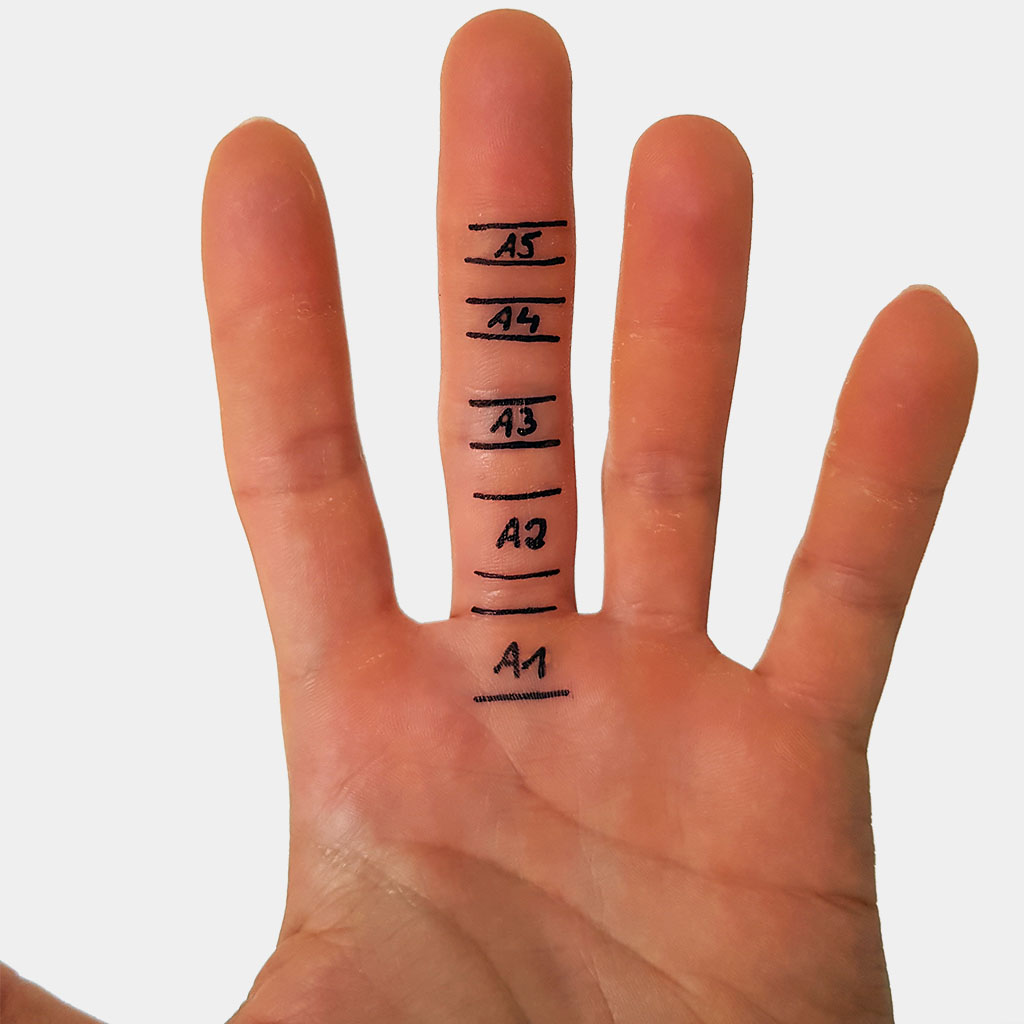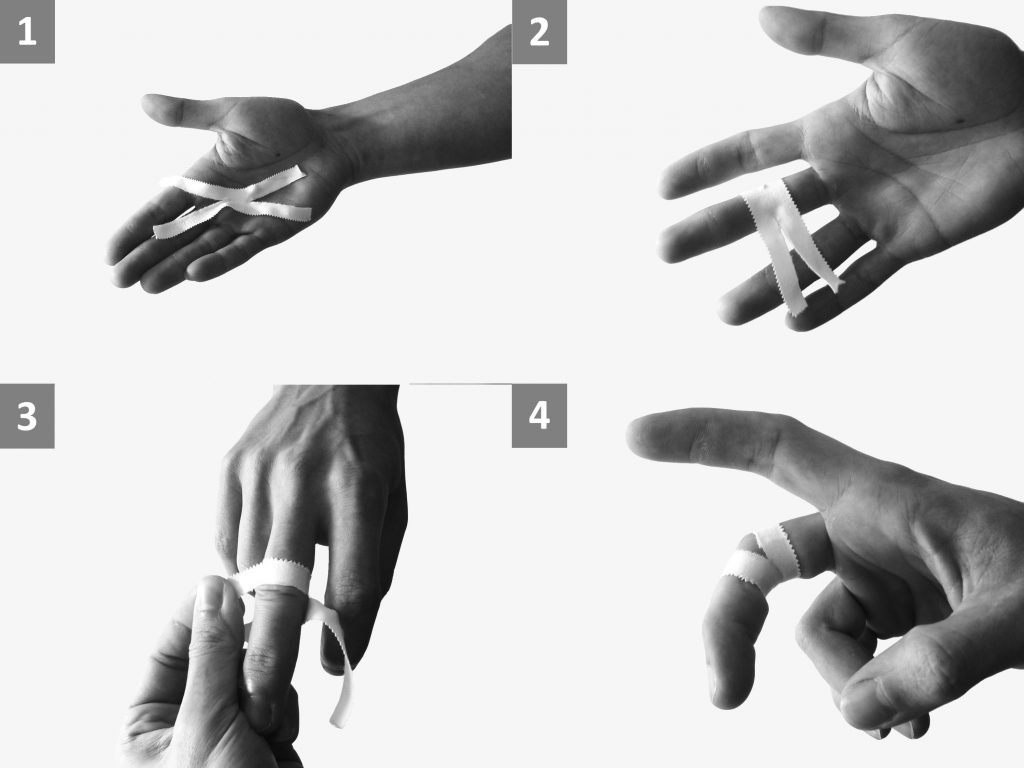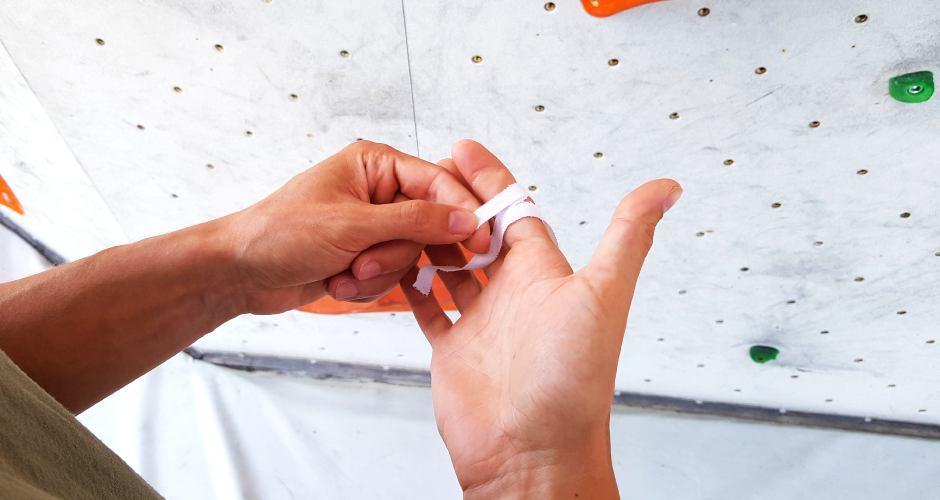KletterRetter Blog
How to tape pulley injuries: fast help for a painful injury
Skin injuries during climbing and bouldering are annoying, but they heal with proper care within a few days. It becomes much more uncomfortable when you “do a pulley” (injury an annular ligament). An inflammation or a tear can cause problems for weeks or even months. Tape can provide some relief, support healing and in some cases, allow you to keep climbing.
How pulley injuries happen
Pulley injuries are a widespread problem among climbers. You probably know someone who has struggled with one, or you have been affected by one yourself. The reason it is so common is the function of the pulleys and the stress we put on them during climbing.
Each of your fingers has five pulleys. Their job is to press the flexor tendons to the bones when you close your hand – like the rings of a fishing rod that hold the fishing line to the rod when you get a bite. When climbing and crimping, your pulleys work hard – your tendons pull harder than normal against the pulleys. A short peak load to your finger, such as slipping with your foot, may be all it takes to trigger an injury. When this happens, the best case scenario is an inflammation and the worst case a tear, which you will most likely hear (a cracking noise).

Injuries to the A2 and the A3 pulleys are the most common. You will quickly notice the pain on the inside of your finger, which is more severe when you press on the pulley or try to bend your finger against resistance. If you want to keep climbing, you can use the so-called H-tape to relieve pain and support your pulleys.
The H-tape method
All you need for a H-tape is a strip of tape about ten to twelve centimeters long and one and a half centimeters wide. Tear it down the middle from each end, but don’t completely tear it in half; leave a one centimeter “bridge” in the middle, making a “H” form, as the name suggests.
Place the center piece on the inside of the middle joint of the affected finger (2) and wrap each of the ends around the finger in a ring (3). One of the ends will go above the knuckle and the other end will go below the knuckle (4). To stop the tape loosening up again during climbing, you will need to apply the tape quite tight, which will also support your pulleys during climbing.

Taping pulley injuries is not a miracle cure
The tape will take over some of the stress on the injuried pulley by holding the flexor tendons in position, but it will not completely relieve pain or act as a replacement for a pulley. Climber and Doctor, Prof. Dr. med. Andreas Schweizer, reported that annular tapes can reduce the force acting on pulleys by 12 percent. This is sufficient to reduce pain during climbing and avoid re-overloading, but you still need to be careful. If you are unlucky enough to sustain a pulley injury, you should avoid any movements and holds that cause pain. This is especially true for crimps that really strain your pulleys.
If your injury was accompanied by an audible crack, you should assess the severity of the injury or have it looked at before considering taping it with this method. It may require an MRI and a visit to a doctor is inevitable. If a tear is confirmed, you are looking at the dreaded forced break from climbing. It will take time to heal and be able to bear load again. When you get the green light to return to the wall, the H-Tape method is a useful method to allow you to ease back into climbing.



